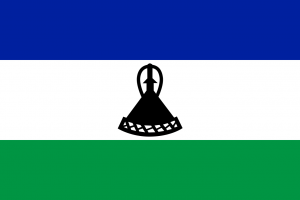Language/Southern-sotho/Vocabulary/Eating-Habits
| ◀️ Common Foods — Previous Lesson | Next Lesson — Traditional Clothing ▶️ |
Introduction[edit | edit source]
In this lesson, we will explore the vocabulary related to eating habits and preferences in Southern Sotho. Food is an essential part of any culture, and by understanding the Southern Sotho language in the context of food and dining, we can gain insight into the rich cultural heritage of the Basotho people.
We will start by learning how to talk about likes and dislikes, as well as how to express allergies and dietary restrictions. Understanding these aspects of eating habits will not only enhance your language skills but also enable you to navigate social situations and engage in conversations about food with native Southern Sotho speakers.
By the end of this lesson, you will be able to confidently express your preferences and communicate effectively in Southern Sotho when it comes to food and dining.
Vocabulary[edit | edit source]
Let's begin by learning some key vocabulary related to eating habits in Southern Sotho. Familiarize yourself with the following words and their pronunciations:
Common Eating Habits Vocabulary[edit | edit source]
| Southern Sotho | Pronunciation | English Translation |
|---|---|---|
| Utsama | /utsama/ | Breakfast |
| Leswika | /leswika/ | Lunch |
| Thopho | /tʰopho/ | Dinner |
| Hlompha | /ɬom̩pʰa/ | Snack |
| Kgaratlho | /k͡xgaratl̩hɔ/ | Dessert |
| Tshelete | /tʃʰɛlɛtɛ/ | Money |
Likes and Dislikes[edit | edit source]
When talking about your likes and dislikes in Southern Sotho, you can use the following phrases:
- Ke kgopela ___ - I like ___
- Ke tseba ___ - I know ___
- Ke a ___ - I am ___ (used to express preference)
- Ke sa ___ - I don't like ___
- Ke na le ___ - I have ___
For example:
- Ke kgopela letsoho - I like vegetables.
- Ke tseba metsi - I know water.
- Ke a go thabela - I prefer it.
- Ke sa tlatsa dinawa - I don't like bananas.
- Ke na le letswai - I have milk.
Allergies and Dietary Restrictions[edit | edit source]
When discussing allergies and dietary restrictions, the following phrases can be useful:
- Ke na le phakela ya ___ - I have an allergy to ___
- Ke na le lefu la ___ - I have an intolerance to ___
- Ke sa tsebe go ___ - I don't eat ___
- Ke na le ditšhelete tša go ___ - I have money to buy ___
For example:
- Ke na le phakela ya thobi - I have an allergy to peanuts.
- Ke na le lefu la gomo - I have an intolerance to lactose.
- Ke sa tsebe go dula ditlou - I don't eat meat.
- Ke na le ditšhelete tša go bela lefatshe - I have money to buy fruit.
Cultural Insights[edit | edit source]
Food holds great cultural significance in Southern Sotho society. Traditional Basotho cuisine is known for its hearty and flavorful dishes, often made with locally-sourced ingredients. Maize, sorghum, and millet are staple grains, and vegetables such as spinach and pumpkin are commonly used.
Meat, particularly beef and mutton, is also an important part of the Southern Sotho diet, with dishes like seswaa (pounded meat) and lebelo (sour milk) being popular. These dishes are often enjoyed during special occasions and celebrations, such as weddings and festivals.
When dining with others, it is customary to share food from a communal plate, emphasizing the sense of unity and togetherness within the community. Additionally, offering food as a gesture of hospitality is deeply ingrained in Basotho culture.
It is important to note that regional variations exist within Southern Sotho cuisine. For example, in the lowlands, dishes like moroho (cooked greens) and papa (stiff porridge) are commonly consumed, while in the highlands, maize-based dishes like ting (a thick porridge) and likahare (maize beer) are more prevalent.
Practice Exercises[edit | edit source]
Now, let's practice what we have learned. Translate the following sentences into Southern Sotho:
1. I like rice and beans. 2. Do you know how to cook pap? 3. She prefers chicken over fish. 4. We don't like spicy food. 5. They have money to buy fruits and vegetables.
Solutions[edit | edit source]
Here are the solutions to the practice exercises:
1. Ke kgopela raitši le masoja. 2. U tseba go sebediša pap? 3. O a go thabela tjotjo ka dikhudu. 4. Re sa tlatsa dinawa tša molomo. 5. Ba na le ditšhelete tša go bela dihlare le dihlahloba.
Conclusion[edit | edit source]
Congratulations! You have completed the lesson on eating habits in Southern Sotho. By mastering the vocabulary and expressions related to food and dining, you can now confidently engage in conversations about likes and dislikes, as well as discuss allergies and dietary restrictions.
Remember to practice using these phrases in real-life situations to reinforce your learning. Understanding the cultural significance of food in Southern Sotho society will not only enhance your language skills but also deepen your appreciation for the Basotho culture.
In the next lesson, we will explore Southern Sotho traditions, focusing on traditional clothing and the importance of preserving cultural heritage.
Other Lessons[edit | edit source]
- Food
- Shopping Vocabulary
- Modes of Transportation
- Telling Time
- Health
- Common Greetings
- Counting Numbers
- Feelings and Emotions
- Money and Currency
- Daily Routines
| ◀️ Common Foods — Previous Lesson | Next Lesson — Traditional Clothing ▶️ |

